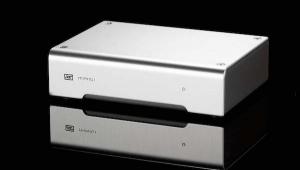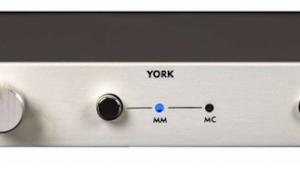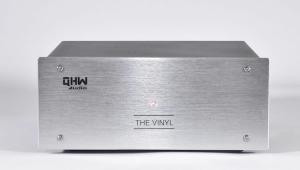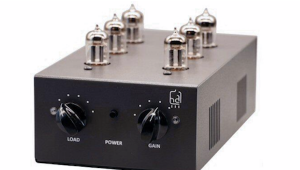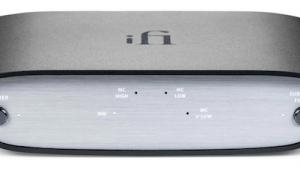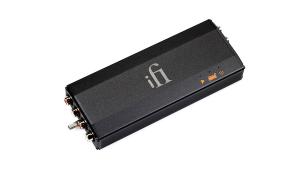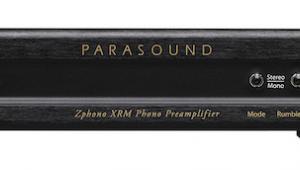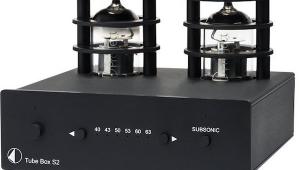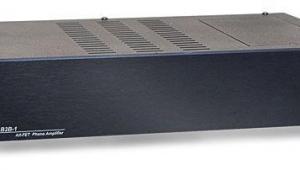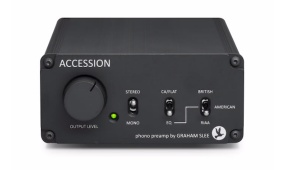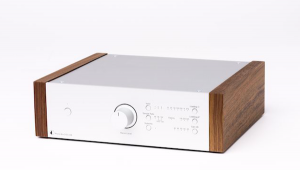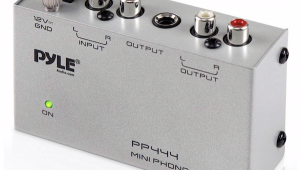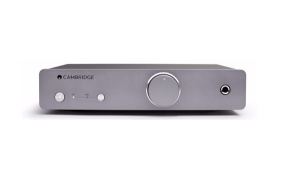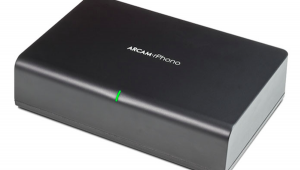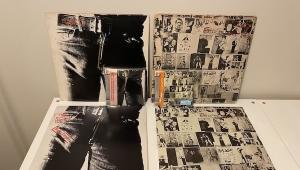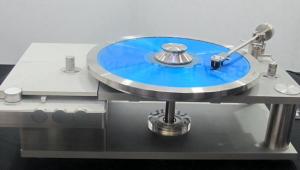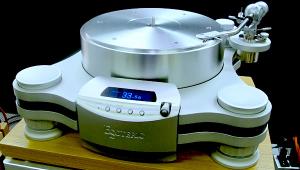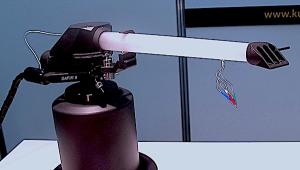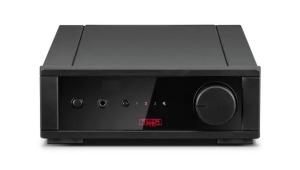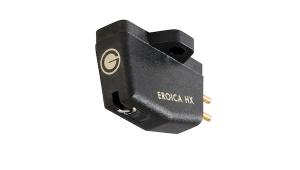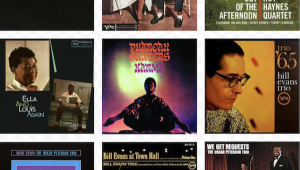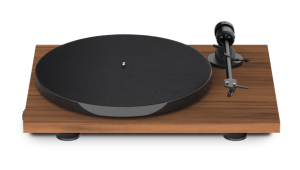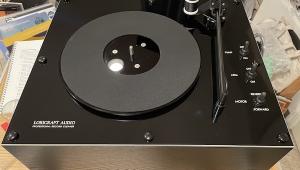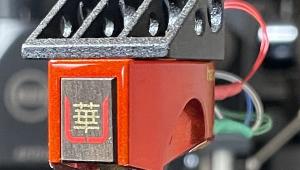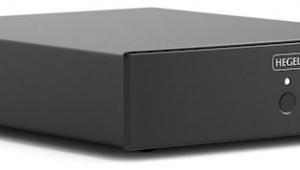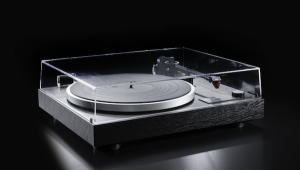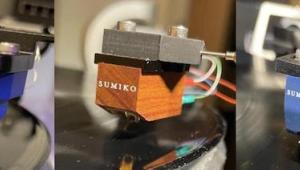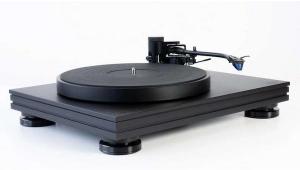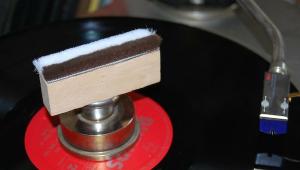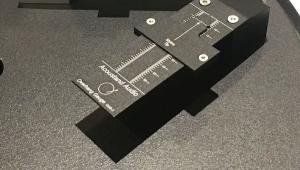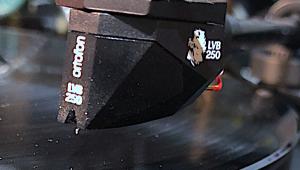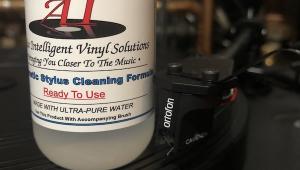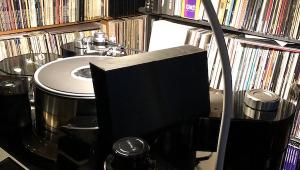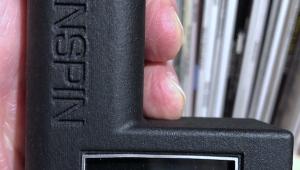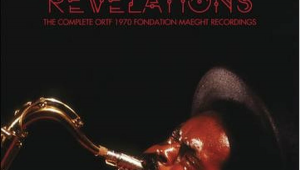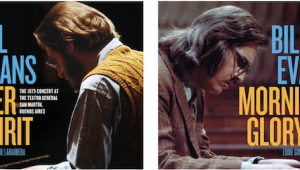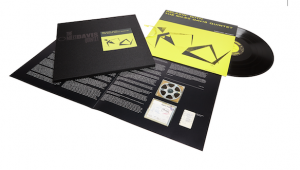Hegel's Remarkable V10 Phono Preamplifier

The late ‘80s was the dawning of the commercial digital audio age and vinyl was going the way of the typewriter, the slide projector and the cassette. You can read more about the company on its website.
More recently, with the vinyl resurgence in full swing, Hegel set its sights on designing a phono preamplifier. The resulting V10, “developed from the ground up” it says in the instruction manual was designed to “keep the music signal as close to the original recording as possible. Therefore, we are constantly looking for ways to lower distortion and noise.”
The $1500 V10 is a relatively small unit, thanks in part to a generously sized outboard dual mono 2 X 18VAC/300mA power1 source featuring a custom-designed E-core transformer that plugs directly into an A.C. socket and connects to the main unit via a long “Y” cable that splits out to dual plugs inserted into a pair of jacks located in an underside chassis recess angled 90 degrees from the front and rear main chassis panels.
Thus, the power connection is nowhere near signal carrying cables and it allows for a super-clean symmetrical rear panel layout. The power jack locations are ideally situated in the recess that creates two separate compartments within the chassis. It separates the power supply board from the signal processing and amplification board. I didn’t “pop the hood”, but clearly everything about the external layout indicates that the designer(s) intended short, efficient signal paths for everything. The input stage uses ultra-low noise discrete JFET transistors for both the MM and MC inputs. The MC input uses 4 JFETs connected in parallel. Hegel claims the input is “completely silent” and that this configuration stops bias current from feeding back to the cartridge coil. The amplification circuits for both the MM and MC gain stages feature low noise power supplies built using discrete bipolar transistors.

The rear panel features single-ended gold-plated RCA and balanced outputs as well as separate single-ended high-quality gold-plated RCA jacks for MM and MC cartridges and a properly large, useful ground lug placed for easy access. Never underestimate the utility of a thoughtfully designed ground lug! There’s no switch to toggle between MM and MC and Hegel warns against having both MM and MC inputs simultaneously connected. Two banks of rear panel mirror-paired DIP switches adjust everything, one for each channel. This too was done for signal path efficiency, but it also requires those doing the switching to pay careful attention, especially the spatially challenged ones like this reviewer.
The DIP switches let you set MM or MC, MC loads of 100 or 300 ohms, MM capacitive choices of 220pF, 100pF or 47pF (the switches are additive so can total up to 367pF), subsonic filter on/off (-3dB @20Hz, -18dB@10Hz, -36dB at 5 Hz) (why two switches per channel are required to set the subsonic filter was not explained in the manual), as well as additional gain choices of +5dB, +10dB and +12dB beyond the default settings, which are 40dB for MM (balanced outputs, 34dB single-ended) and 60dB for MC (54dB single-ended). The instruction manual says it’s possible to set impedance “freely between 50 and 550 ohms” and add 6 addition dB of gain, but to do so contact your Hegel dealer for more information”. For most users the available gain and loading options will be more than sufficient. There are also switch settings for the subsonic filter and MC impedance ominously labeled in the instruction manual “do not use”. I didn’t try either to find out what might happen.
Set Up And Use
I ran multiple MC cartridges into the V10 and ran it both singled ended and balanced out. The V10 comes pre-configured for MM cartridges. Among the cartridges were the Hana Umami, Ortofon Verismo and believe it or not an Adcom Crosscoil low output that had been rebuilt by the actual Garrott Brothers before their tragic demise. That cartridge had sat around for decades and played only occasionally.
The default energy saving “on/off” setting is “normal sensitivity”. That is, after a certain period of inactivity, the V10 shuts off. The “high sensitivity” setting will shut off the V10 “even though you are playing music”. What? The “disabled” setting leaves the unit on until you turn it off. That’s how I ran the V10, which does not mean I left it on continuously. Once you’ve got the V10 configured it’s a one button operation. Turn it on by pushing the front mounted buttion, wait for the blinking front light to turn solid and you’re good to go.
Not the Expected Sound!
“Ultra-low noise” doesn’t begin to describe this phono preamp’s remarkably quiet backgrounds and effortless transparency. At one point during the review I had cranked up the volume to listen for noise and there was none. That was the first obvious quality that I noticed. I thought I’d turned the volume sufficiently down to safely play a record. I’m fortunate to have been right at the volume control when I lowered the stylus onto the record surface. It would have been loud had I not turned down the volume. Yet there had not been even a trace of hiss, rushing noise or hum. None.
Next was the transient purity and delicacy unusual in my experience at this price point. The overall sound in this regard was silky smooth leaning towards but never becoming soft. The Music Matters out of print edition of Grant Green’s Idle Moments (Blue Note MMST-84154) is a sonic gem rich in subtle transient detail and textures. On the title tune everyone takes it slow and easy. The V10 delivers Al Harewood’s delicate brush work with an outstanding balance of brush “edge” and “swish”; his microdynamic shifts in intensity well-captured. When Bobby Hutcherson takes his vibes solo center stage, the image is properly focused, shimmering and rich in lower frequency harmonics. Joe Henderson’s breathy sax produced reedy, yet supple textures that made me want to wipe off the speaker drivers. Bob Cranshaw’s bass lines, deep and mellow sounded like a reasonably close approximation to what I get with my reference phono preamp costing around 30X times as much. This was with the Hana Umami on the Acoustic Signature TA-7000NEO arm and Montana NEO turntable. By the way, there's a recently released Blue Note "Classics" edition of the Green LP cut from tape by Kevin Gray. It's not quite the sonic equal of the Music Matters edition but the price is low and without a direct comparison it too sounds really good. What I’m suggesting is that this “budget” phono preamp can swim well with much bigger fish! At the $1500 price point I’m expected either more edge and grain or more muffle and softness.
Joni Mitchell’s new 3 LP Live at Carnegie Hall 1969 (Reprise R1 654024) is a historic artifact strictly for fans. But for fans, oh, my! Minus production notes I’m guessing Bernie Grundman cut from high resolution digital files but at this point for a pristine, simple Carnegie Hall recording you won’t complain. For instance on “Marcie”, just Joni center stage accompanying herself on guitar, it’s “you are there” time. The V10 delivers the goods on this one, revealing Mitchell’s small vocal intensity shifts with skills usually reserved for far more costly phono preamps. That goes as well for the silky delicacy of her guitar placed in a compact, distinctive space surrounded by faint hall reverb. The lower the SPLs, the more real it sounds from about a 10th row seat.
Speaking of “purity”, please consider All the Good Times Are Past and Gone (Acony ACNY-2015), Gillian Welch and Dave Rawlings’ “what do do during Covid lockdown” Grammy Award winning album (“Best Folk Album” 2021). Recorded at home using a Telefunken SM2c into an Otari MX55 ¼” 2 track deck at 15IPS and cut directly to lacquer on a Neumann VMS80 lathe fitted with a Ortofon DSS 731 cutterhead. Tape playback was on a tube Studer A820. Also utilized was a Fairchild 670 limiter, Barry Wolifson’s M/S decoder and a P&G 1500 Series Stereo Fader.
Get the picture? Remember you’re in a living room not a recording studio, but boy are you in a living room! The musical fare is mostly traditional in the Welch/Rawlings way, with songs by John Prine, Bob Dylan, Norman Blake and Wheeler/Leiber’s “Jackson” (familiar to Kingston Trio fans in 1963 and later covered by Johnny Cash and June Carter). The cover of Prine’s “Hello In There” will stop you in your tracks. This $1500 phono preamp produces the 3D, of both the music and the space behind it, while honoring the purity and simplicity of the recording.
I could cite more musical examples of how fine a phono preamp this is but I think I’ve made the point! Of course I’ve not heard every phono preamp, nor have I heard for quite some time other phono preamps in the $3000 and down price point, but for now when asked I’ll recommend at the under $1000 price point the QHW “The Vinyl”, and at $3000 the PS Audio Stellar. In the middle at $1500 there’s Hegel’s V10, which is not as versatile as the Stellar but sonically could be its (different sounding) equal.
This review is somewhat "late to the fair" because though the review sample arrived quite some time ago, my electricity issues produced a delay and then it took some time to cycle back to it. I'm glad I waited because the V10's exceptional quiet—it's freedom from hiss, "rush" and hum could now be fully appreciated.
Technical Specifications
Amplifier Typology: Ultra low noise discrete JFET transistor input stage for both MC and MM
Gain XLR Out MM: 40dB / 45dB / 50dB / 52dB
Gain XLR Out MC: 60dB / 65dB / 70dB / 72dB
Gain RCA Out MM: 34dB / 39dB> / 44dB / 46d
RCA Out MC: 54dB / 59dB / 64dB / 66d
MC Load Impedance: Freely adjustable between 33 and 550 ohm / 47 kohm
MM Load Capacitance: 100pF / 147pF / 220pF / 247pF / 320pF / 420pF / 467pF @ 47 kohm
Subsonic Filter: Switchable on / off, -3dB at 20Hz, -18dB octave
RIAA Accuracy: +/- 0,2dB / 20Hz - 20kHz
Output Noise*: -84dB/MM ("A" weighted ref: 0dBV), -81dB/MC ("A" weighted ref: 0dBV)
Output Impedance XLR / RCA: 200 ohm
Channel Crosstalk:-84dB @1kHz 0dBV
Frequency Response: 2Hz - 20kHz
Distortion (THD) MM: < 0.005% @1kHz 0dBV
Distortion (THD) MC: < 0.009% @1kHz 0dBV
Inputs: 1 x unbalanced (RCA) MM, 1 x unbalanced (RCA) MC
Outputs: 1 x unbalanced fixed (RCA), 1 x balanced fixed (XLR)
Power Adapter: Hegel Power Adapter M30103
Dimensions with Feet: 6cm x 21cm x 28cm, 2.4" x 8,3" x 11" (H x W x D)
Weight: 2,2kg / 4,9lbs unit weight
* When stable operating temperature has been reached
